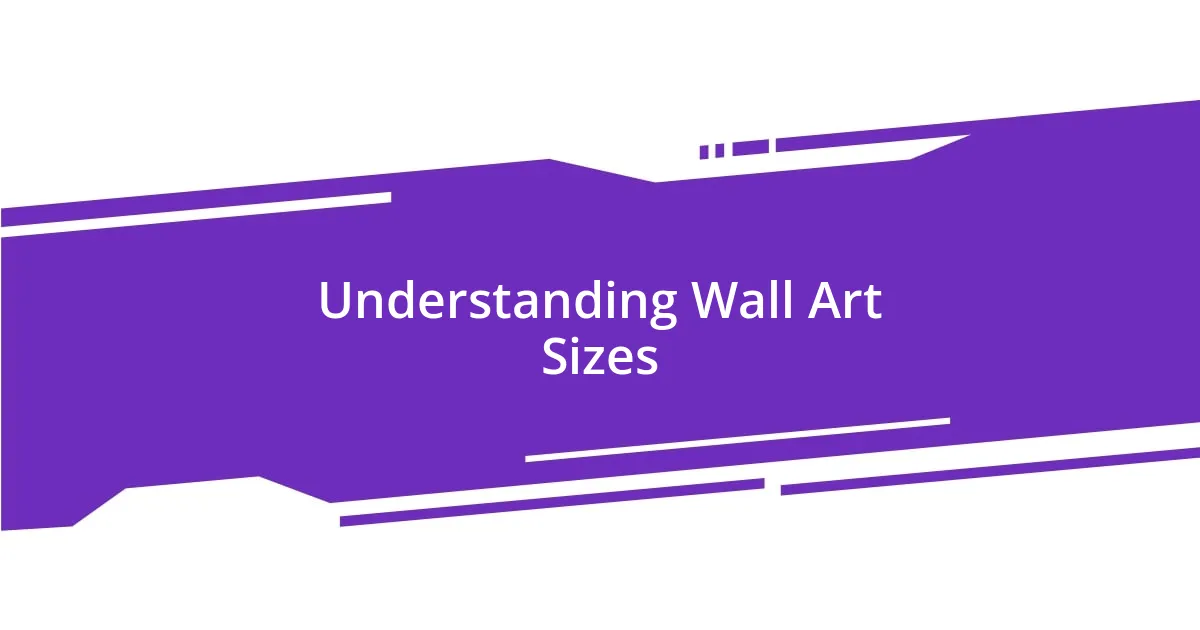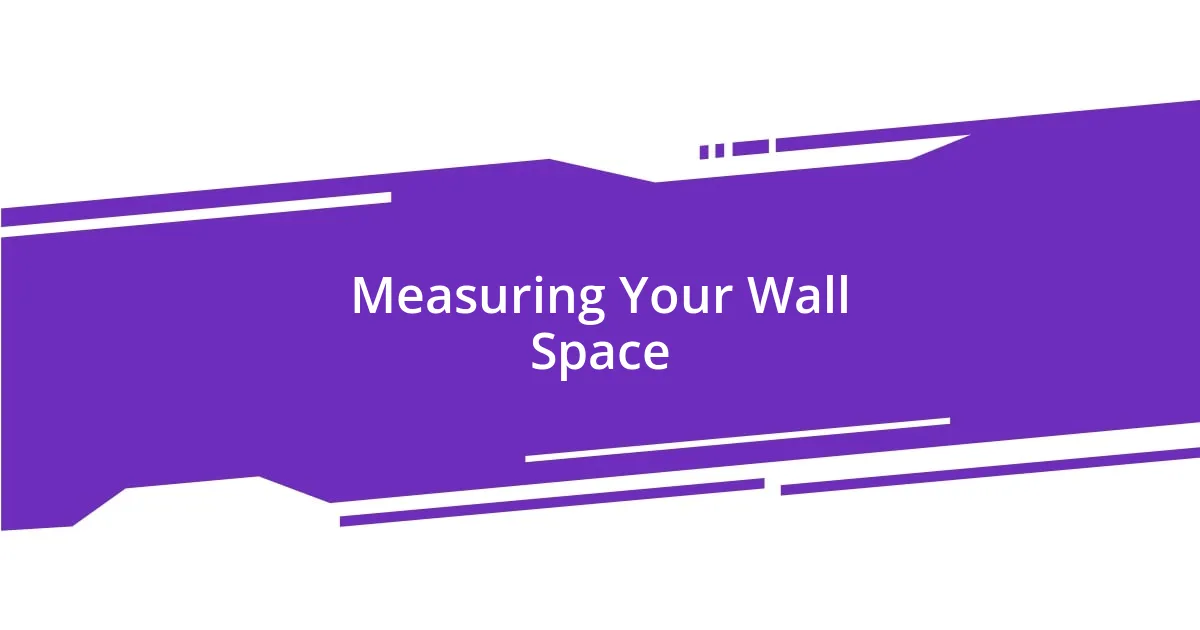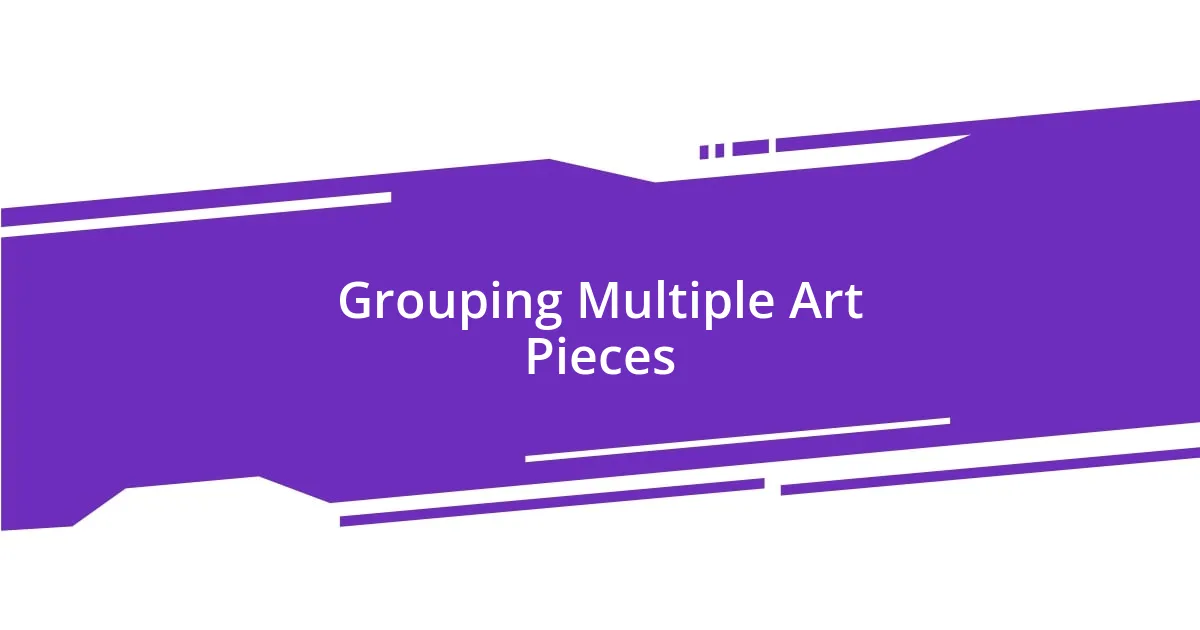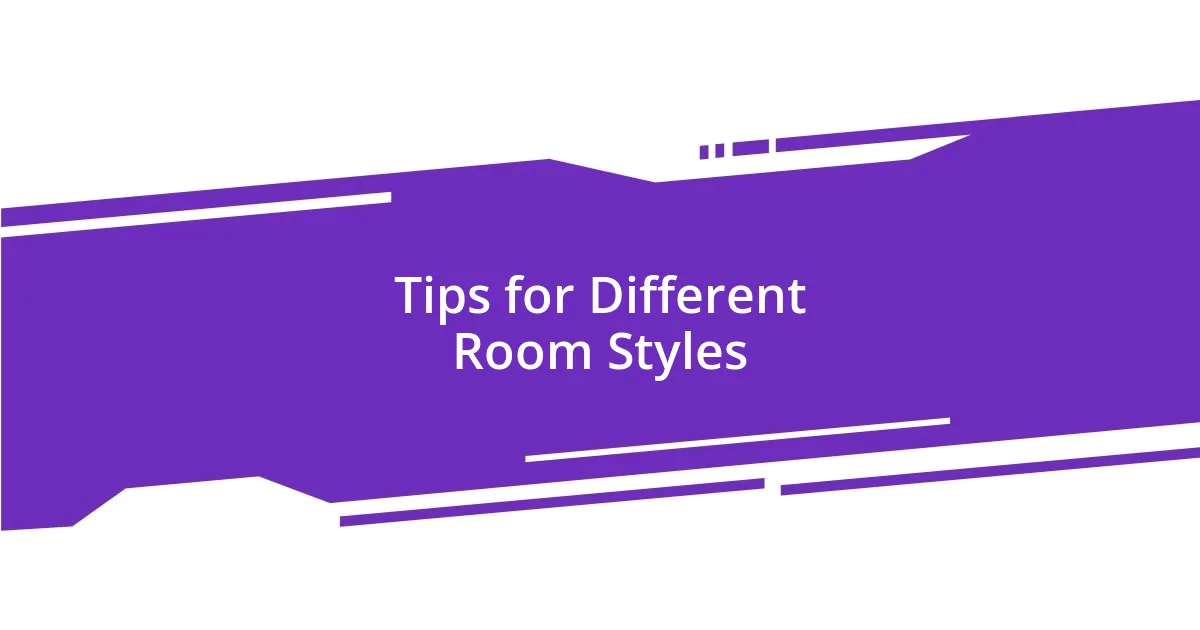Key takeaways:
- Choosing the right wall art size impacts both the aesthetic and emotional atmosphere of a room; larger pieces create drama while smaller ones offer coziness.
- Proper measurement of wall space is crucial; leave a 4-6 inch gap between artwork and furniture for best visual appeal.
- Grouping art pieces can enhance storytelling and cohesion, while embracing negative space prevents clutter and elevates individual pieces.
- Balancing colors and themes is essential for a harmonious look; selecting art that reflects a common palette can create an inviting atmosphere.

Understanding Wall Art Sizes
When it comes to wall art sizes, the impact of scale is often underestimated. I remember hanging a delicate piece above my couch, thinking it would be perfect, only to realize it felt lost in the vast space. It’s interesting how the right size can either pull a room together or make it feel disjointed. Have you ever walked into a room and felt that something was just off? Sometimes, it’s simply because the art doesn’t fit the scale of the walls or furniture.
Choosing the right size isn’t just about aesthetics; it also affects the mood of the room. For instance, large artworks can create a dramatic focal point, bringing energy to a space. I’ve noticed that my living room feels more inviting when I display a large canvas that draws people in. Conversely, smaller pieces can offer a cozy vibe, especially in a more intimate setting.
Think about your space—what do you want to feel when someone walks in? This emotional connection can guide your choices in size. I always suggest measuring your wall and considering the existing decor before making a decision. Visualizing how different sizes will play off each other can make all the difference in achieving that cohesive look you’re aiming for.

Importance of Scale in Art
When selecting art, scale plays a pivotal role in how the piece interacts with the surrounding space. I once had an experience where I picked a massive abstract piece for a narrow hallway. While I loved the vibrant colors, the sheer size made the hallway feel cramped rather than inviting. This taught me that the right scale can elevate the overall ambiance, creating harmony instead of chaos.
- Scale influences perception: Large pieces can make a statement, while small artworks can feel intimate.
- Emotional impact: The right size can evoke feelings of comfort or grandeur, depending on your room’s vibe.
- Space relationship: Art should complement furniture and architecture, not overwhelm or underwhelm it.
- Personal connection: I find that when the scale resonates with me, it enhances my emotional connection to the artwork.

Measuring Your Wall Space
When it comes to measuring your wall space, I can’t stress enough how crucial this first step is. Using a measuring tape is essential—not just for the width, but also for the height. When I measured the wall above my sofa, I realized that, while I had initially focused just on width, the height also played a significant role in how the art interacted with the furniture beneath it. Don’t you just hate it when you hang something, step back, and realize it’s just too high or too low?
I often recommend marking the measurements on your wall using painter’s tape. This not only gives a visual outline of the size but also allows you to play with different heights and placements without making any holes. I once spent an afternoon doing this, moving the tape around until I struck that perfect balance that felt right. In that moment, it truly hit me how much a visual representation can impact the decision-making process.
Lastly, consider the surrounding furniture and decorations while measuring. If you’re hanging art above a console table or a piece of furniture, I’ve found that leaving a gap of about 4 to 6 inches creates a nice flow. It’s those little details that can turn an okay arrangement into an extraordinary one. Have you noticed how some spaces just feel “right”? That’s often the result of thoughtful measurements and positioning.
| Aspect | Consideration |
|---|---|
| Width | Measure the total width of your wall space. |
| Height | Measure the total height, especially if there are furniture pieces underneath. |
| Furniture Gap | Allow 4-6 inches between artwork and furniture for best visual appeal. |

Choosing the Right Size Art
Finding the perfect size for your wall art can feel like a juggling act. I remember choosing a beautifully intricate piece that I thought would be just right for my dining room. However, when I hung it up, the delicate details got lost on the large wall, making the piece feel almost insignificant. Have you ever had an experience like that? It really drove home the idea that the size of art needs to resonate with both the space and the viewer’s eye.
One trick I often use is to visualize the artwork’s scale by holding a piece of paper cut to its dimensions against the wall. It’s surprising how much this simple act can dramatically change your perspective. I once stood in my living room holding a sheet of paper and suddenly realized that my vision for a larger piece added an unwelcome heaviness to the room’s flow. By experimenting with sizes in this way, I’ve learned how important it is to ensure that art feels proportionate to the space.
Don’t forget about the layout. When I was styling my home office, I placed smaller prints at eye level along a shelf above my desk. It created an inviting atmosphere that felt personal and engaging. I think this is where many people go wrong—they overlook the importance of placement and scale combined. So, when considering your wall art, keep in mind how each piece will interact not only with your space but also with your emotional response. The right size can turn a mere decoration into a captivating focal point.

Grouping Multiple Art Pieces
Grouping multiple art pieces can truly elevate a space, transforming it into something unique and expressive. I fondly remember the thrill of creating a gallery wall in my hallway. I played around with different combinations of sizes and styles, and after a few tries, I found a balance that felt harmonious without being too uniform. Do you ever want your wall to tell a story? That’s the beauty of grouping—each piece can contribute to a larger narrative that captures your personality and experiences.
When arranging art, I’ve learned that staggering the pieces, instead of aligning them all straight, introduces a dynamic feel. I once hung a series of travel-inspired prints with some framed photographs from friends. Instead of placing them in a rigid grid, I mixed up the sizes and orientations. The result was a lively yet organized display that genuinely reflected my journey. It’s amazing how I can get lost in memories with just a glance—this is the magic of art grouping.
Another important aspect is the use of negative space. I recall experimenting with a collection of my favorite paintings, deliberately leaving gaps between them. At first, it felt strange, and I worried it would look incomplete. However, stepping back and viewing the arrangement made me realize that those empty spaces allowed the eye to breathe, emphasizing each piece’s beauty. Have you ever noticed how too much clutter can overshadow even the best art? Embracing negative space can turn your grouping from chaotic to captivating.

Balancing Colors and Themes
Balancing colors and themes in your wall art is essential for creating a cohesive look. I remember when I first scattered random pieces around my living room, thinking that variety was the key to visual interest. Instead, it felt disjointed and chaotic. Have you ever felt that unsettling disconnect in your space? I realized that by carefully selecting a color palette that complemented my furnishings, I could weave a narrative through the artwork that made everything feel harmonious and inviting.
Choosing art that reflects common themes can greatly enhance the overall atmosphere of your space. For example, I once decided to display a collection of botanical prints that echoed the colors and textures in my garden. As I stood back to admire the arrangement, I felt an emotional connection to both the art and my outdoor sanctuary. Isn’t it incredible how a similar theme can ground a room? It invites a sense of flow, making each piece feel intentional rather than just an afterthought.
Don’t underestimate the power of color psychology either. I once selected a striking abstract piece with warm hues for my study, aiming to boost my creativity. Surprisingly, it worked! Whenever I walked in, the vibrant colors energized me, prompting new ideas. Have you ever thought about how colors affect your mood in a space? By thoughtfully selecting pieces that resonate not just with your aesthetic but also with your emotional needs, you can create an environment that inspires and revitalizes.

Tips for Different Room Styles
When navigating the eclectic world of wall art for different room styles, consider your primary function and feel. In my cozy reading nook, I opted for a series of serene landscape paintings, each piece encouraging a sense of tranquility. Have you ever felt how certain images can make you breathe a little deeper? This calming effect is especially crucial in personal spaces where relaxation is the goal.
For a vibrant dining area, think bold and energetic art that sparks conversation. I recall hanging a large, colorful abstract piece that instantly transformed the room. Every dinner party becomes a mini gallery tour! Isn’t it fascinating how art can serve as a focal point, drawing people into a world of creativity and discussion?
When styling a minimalist space, less truly is more. I once experimented with a single, impactful piece that had a strong visual presence. It felt like breathing life into the room without overwhelming it. Have you considered how one statement piece can evoke a sense of sophistication and elegance? Striking that balance can turn a simple wall into an expressive canvas of personal style.












